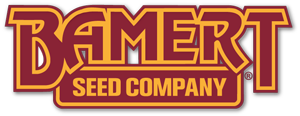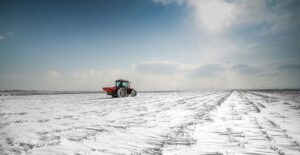Understanding the True Cost of Conservation Seed, CRP Seed & Native Grass Seed
Whether you’re in the market for conservation seed, CRP seed, or native grass seed, it’s important to know the difference between purchasing native seed blend in bulk or PLS pounds. The goals of nearly any project with native grass seed include achieving a good stand from the seed in the most economical way possible. These best practices include:
- Using an appropriate planting rate, whether it is pounds/acre or seed/foot
- Purchasing viable seeds to accomplish that planting rate
- Purchasing good, quality seed
- Understanding the PLS pounds you’re purchasing
To get the most of your investment for all your conservation, CRP, or native grass needs, let’s first start with some basics. PLS refers to Pure Live Seed and is the measure of viable/live seed in your order. It is obtained when a specific lot of seed is tested for percentage of purity, dormancy, and germination within the sample.
More specifically, the percentage purity is multiplied by the sum of the percentage of germination and percentage of dormant seed. But to someone who’s purchasing conservation seed, CRP seed, or native grass seed, this can seem like a complicated way of figuring the percentage of viable seed in a bag.
To make it easier, let’s assume that you are buying a 100 bulk pound bag of little bluestem. The test shows a purity of 90 percent. That means 90 percent of the sample is little bluestem seed, while the remaining 10 percent is inert matter, weed seed, or other crop seed. The sample has a 60 percent germination rate and 10 percent dormant seed. If you remember from above, we add the percent of germination and the percent of dormant seed. In this example, we would come up with 70% viable seed. We then multiply percent of purity by the percent of viable seed.
0.90 purity X 0.70 viable seed = 0.63 or 63% PLS
We now know that the bag of little bluestem has a 63% PLS. This means that of the 100 bulk pounds within the bag, 63 pounds will be viable seed (63 PLS pounds). The remaining 37 bulk pounds in the bag will be made up of inert matter, weed seed, other crop seed, or non-viable seed.
If you buy this bag on a bulk pound basis you would pay for every pound in the bag. So, in addition to the viable seed, you’re also paying for the inert matter: weed seed, other crop seed, and non-viable seed.
However, if you purchased the bag on a PLS pound basis, you would only pay for the 63 pounds of viable seed in the bag, which could have a huge impact on the actual cost of your final product. Buying on a PLS pound basis is the only way to know the true cost of your seed.
In addition to the bottom line, understanding PLS helps you compare the quality of seed for your conservation, CRP, and native grass projects. Every lot of native species is unique. One dealer may have little bluestem that has 63 percent PLS, while another dealer offers the same species that has 90 percent PLS. If both dealers are offering the seed at the same price per bulk pound, the seed with 90 percent PLS is obviously the better value.
Knowing PLS allows you to discern the true value of a seed’s price point. The only way for you to know the value of each lot is to calculate the cost per PLS pound of seed. The lower PLS percent lot is not necessarily lower in quality compared to the higher PLS percent lot if you are also using a PLS pound/acre planting rate.
Let’s say your CRP project calls for a planting rate of 10 PLS pounds/acre. To reach that rate using the 90% PLS lot you would have to put out about 11.11 bulk pounds/acre. To reach the same planting rate with the 63 percent PLS lot, you would have to put out about 15.87 bulk pounds/acre. The increased bulk planting rate needed to accomplish the desired PLS planting rate will not have any added cost if you’re buying on a PLS pound basis. Most products sold on a bulk pound basis will have a recommended planting rate in bulk pounds. If you use our example from earlier and put out a 10 bulk pound/acre planting rate, the 63 PLS percent lot will result in about 2.7 fewer pounds of viable seed being planted per acre. This must be factored in when evaluating the cost of the project.
In short, there are a few ways to figure the best value of quality seed for your native grass seed project. You can do the math yourself, or rest easy in knowing purchasing your seed on a PLS basis adds up to a successful conservation seed project completed within your budget.



